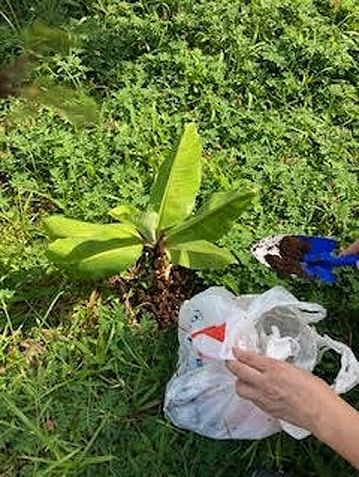Chilli and curry leaf plants affected by microscopic pests
The leaves of my chilli plant curl and my curry plant has white spots. I cut off the stems, but the new growth has the same problem.
Beena Chelvam
The deformed new leaves of your chilli plant indicate a broad mite infestation. These are small, sap-sucking pests that cannot be seen with the naked eye. You can use low-toxicity pesticides such as sulphur soap solution and lime sulphur to combat your pest problem.
As for your curry leaf plant, the issue cannot be seen clearly from the image provided, but the pest most likely to be affecting your plant is the citrus Hindu mite. It is another small pest which can be found on edible plants from the Rutaceae, like lime. Its feeding pattern will create numerous small white spots on affected leaves. Neem and summer oils can be used to control their population.
For both pests, repeated applications and thorough coverage are required to keep the pest population low and reduce damage to plants.
Orchid is a dendrobium and needs more water
I was gifted this orchid a week ago. I placed it in a planter facing north and spritz it with water almost every day as the weather is hot. The stems now look thin and wrinkled. What is the name of this orchid and how do I take care of it?
I also thought of placing it indoors as I was told that the orchid can produce oxygen at night. Is this true and is the plant suitable for indoor environments?
April Chee
Your orchid is likely a Dendrobium hybrid. The shrivelling of its pseudobulbs is an indication that it may not be receiving sufficient water or that it may be drying out quickly. In hot environments, growers thoroughly water their plants twice a day.
Depending on the type of Dendrobium, they grow best at sites which receive filtered to direct sunlight for at least four hours a day. They are not indoor plants and it is not practical to move the orchid in and out of a room daily. The oxygen produced is minimal and you are better off ventilating your room with open windows.
Velvet Persimmon is edible

I came across this tree at Sengkang Riverside Park. Its fruit look like apples. May I know the name of this tree and whether the fruit is edible?
Peter Tang
The tree is the Velvet Persimmon (Diospyros blancoi) and it produces edible fruit when ripe. This tree is often planted in Singapore's parks and gardens, and admired for its attractive growth form. The fruit's exterior is covered with a thick coat of minute hairs, which can irritate some people's skin. As such, the fruit should be peeled before eating.
"Sword" banana suckers grow better

I have grown my banana plant since Christmas last year and have watered it almost daily. Why is it still so stunted and what are the short brown streaks on the leaves? Also, does this plant reproduce on its own?
Mary Kok
Your plant looks rather small in the picture. You may have used the smaller, "water" sucker for propagation, which is not as vigorous. Try the taller and thicker "sword" sucker for better results.
Banana plants do not grow well in compacted soils. They should be grown in a sunny site with deep, fertile soil that is rich in organic matter. Clear the base of the plant of weeds to reduce competition. Fertilise regularly to promote growth.
The markings on the leaves are normal. They appear on the young leaves of some banana varieties when the plant is still small.
Banana plants spread by producing suckers from the base of the mother plant. After flowering and fruiting, the mother plant no longer grows and slowly dies.
Mushroom usually no cause for concern; Philodendron needs more water and light

My Monstera plant has grown mushrooms and the Philodendron's new shoots have withered prematurely. What is wrong?
Jean Ngiam
The appearance of mushrooms is usually no cause for concern. They appear if you are using a growing mix that is largely organic matter-based and contains materials such as compost made from spent mushroom substrate and/or wood waste. They will go away once the media dries out or if there is a lower concentration of undecomposed organic matter.
As for your Philodendron's leaves shrivelling, ensure it is well watered and not allowed to dry out, and that it is not grown in too hot or too windy a site. It is regarded as an "indoor plant" as it is a shade-tolerant plant that can look good for short periods of time when displayed in deep shade. However, it actually fares better in brighter conditions, so grow it in a spot which receives at least four hours of filtered sunlight a day.
- Answers by Dr Wilson Wong, an NParks-certified practising horticulturist, parks manager and ISA-certified arborist. He is the founder of Green Culture Singapore and an adjunct assistant professor (Food Science & Technology) at the National University of Singapore.
- Have a gardening query? E-mail it with clear, high-resolution pictures of at least 1MB, if any, and your full name to stlife@sph.com.sg. We reserve the right to edit and reject questions.

